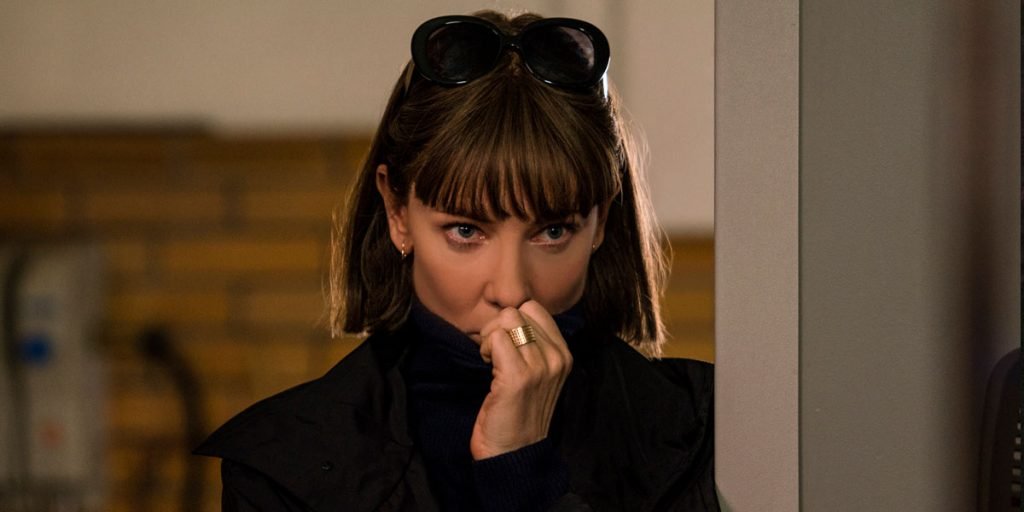Where’d You Go Bernadette is Linklater’s attempt to portray an artist’s creativity, family crisis and many more other disconnected themes.
Where’d You Go Bernadette is one of those movies that are able to enrage you completely. On paper it is ambitious enough to have what it takes to make a good movie: not only goddess Cate Blanchett as the protagonist, Kristen Wiig and her humour and acclaimed director Richard Linklater (Before Sunrise), but also Seattle – the top of the Space Needle and lots of rain, entire scenes shot in Antarctica, the longing for L.A., the outstanding success of the book it is drawn from… should we stop here? Because the list can easily go on: it has many significant cameos, Microsoft, architecture, Russian mafia. What’s going to make you angry is its total incapability to keep all of these elements together in a coherent structure. Like, did they really think they could?
This is the story of Bernadette Fox (Cate Blanchett), former architect and MacArthur Grant recipient, who’s now become a neurotic but witty middle-aged woman living in Seattle, a city that she despises. “Where’d you go Bernadette” is the question asked by her daughter, Bee (Emma Nelson), in the first movie fragments, explaining to the audience that her mother is nowhere to be found. And so the story begins from the very end and ends with the beginning, in search for the reason that may have led Bernadette to vanish.
It’s clear that Cate Blanchett’s character was living an unsatisfying life, suppressing her architect-creativity to fit into the roles of mother and wife. She spends her mornings conversing with her Indian digital assistant, who sends her medicines and clothes. Her clichéd husband, portrayed by Billy Crudup (recently seen in Apple’s The Morning Show), works at Microsoft, doesn’t have any time for the family and supposedly has extra-marital affairs. Lastly, there’s Bee, their daughter, a smart girl who has the deepest connection with her mother (since her father is always missing).
What breaks the household’s monotony is Bee’s request to go on a family trip to Antarctica. And here’s where the adventure begins or, rather, should begin. As they plan the trip, all the façades that were kept up by Bernadette miserably fall down, uncovering what was hidden behind the walls: repressed feelings, patience, unsaid words. Until at some point Bernadette mysteriously disappears, forcing the rest of the family to pick up the pieces she left behind. And all of the clues lead to Antarctica.
Theoretically, according to the director, Where’d you go Bernadette should be a movie about an artist’s creativity crisis. It should portray the dreadful moment of stasis of an artist that simply cannot create anymore. The fact is that it’s not. Since the film aims to be so many things at once, all of these elements get the same relevance inside its overall structure, with the result of it missing the main point. It becomes a movie about a female architect, then about family difficulties, then about leaving L.A. behind, then about a terrific travel… Everything becomes collateral damage to the movie’s confused structure. Even Cate Blanchett. Stuck in a character that resembles Woody Allen’s Blue Jasmine, her acting is so exasperated that her character only ends up resulting intolerable to the audience. Bernadette Fox is a misanthropic, post-menopausal woman, and the only way in which you can relate to her or her story is if, at any point, she is displayed in a way that enables you to empathize with her. Unfortunately, she doesn’t. She’s such a self-centred character that you just can’t feel sorry for her. You simply cannot wait for her story to be over and not to see her ever again.
Oh, but poor Bernadette. It’s not her fault, but the screenwriter’s. All of the characters are portrayed with an incredibly shallow personality- they display artificial emotions, and move throughout the screen getting by solely with small talks. Without any significant change in their circumstances, they have sudden coups de genie that make them realise that, all their lives, they have been doing it all wrong, and take the chance to finally make it right. One of the reasons why the film’s structure is such a mess could be related to book’s fragmented form. The chapters are disordered sequences of Bee’s journal entries, letters, conversations, all collected with the sole scope of finding clues to where Bernadette could be hiding. If only the movie had abided by the same purpose. No, the search for Bernadette occupies only the smallest portion of the narrative, all taken by forewords and other forewords.
Where’d you Go Bernadette is not just the title of the film: it’s also the question it leaves the audience with. Where did the plot go? Where did all of those promising elements run away to? Could an artist’s creativity crisis be resolved with a family trip to Antarctica? Though Linklater seems to have the answers, his film is a failed attempt to use as many promising elements as possible to make the audience forget about the lack of a main original idea for the movie. It’s clear that the director couldn’t see which direction the movie was taking, and instead of tackling the question, he decided to elude it by adding up more elements. We all know that even a minestrone soup can only be made with just the right amount of ingredients. It’s all about moderation, and about deciding whether the starter will be a vegetarian soup or a meat one.
Where’d You Go, Bernadette is now available to watch on digital and on demand.

